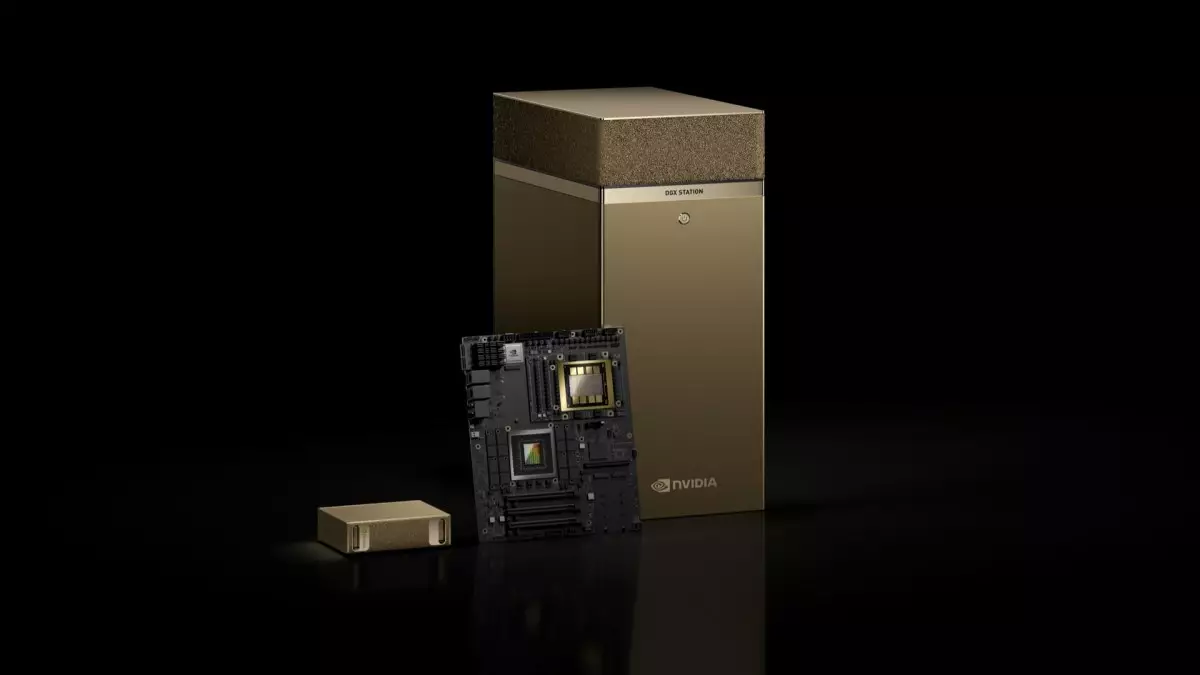In a significant leap toward the future of artificial intelligence, Nvidia has unveiled its latest innovations at GTC 2025. Spearheaded by CEO Jensen Huang, the company introduced a new lineup of “AI personal supercomputers” leveraging the power of the groundbreaking Grace Blackwell chip platform. These machines, named DGX Spark and DGX Station, are set to redefine how users prototype, fine-tune, and deploy AI models on the edge. Huang’s proclamation that “this is the computer of the age of AI” encapsulates the ambitious vision behind these devices.
The implications of this launch are monumental. With AI increasingly becoming the backbone of many industries, the demand for robust, efficient, and specialized computing power is at an all-time high. Nvidia’s response with these new models is not just timely but essential. It positions the company as a pivotal player in a market hungry for innovation. These machines hold the promise of transforming how enterprises operate, challenging the very fabric of traditional computing.
Unmatched Performance with DGX Spark
Taking center stage is the DGX Spark, engineered to deliver a staggering 1,000 trillion operations per second. This capability is made possible through the advanced GB10 Grace Blackwell Superchip, showcasing Nvidia’s commitment to performance that is both sustainable and unprecedented. In an age where speed and efficiency dictate success, the DGX Spark offers an edge that could prove transformative for developers and companies alike.
What sets DGX Spark apart is not just its raw power but its versatility. It is designed to cater to a broad spectrum of AI applications, enabling everything from small-scale prototypes to complex models. With the ability to function seamlessly at the edge, Nvidia broadens the possibilities for real-time data processing and machine learning. The future landscape of AI will demand machines that can operate in diverse environments, and DGX Spark is clearly geared to meet that challenge head-on.
DGX Station: Power Meets Practicality
Complementing the capabilities of DGX Spark is the DGX Station, equipped with the GB300 Grace Blackwell Ultra Desktop Superchip and an impressive 784GB of memory. This makes it an appealing choice for both developers and enterprises looking for formidable computational muscle without compromising on practicality. Unlike traditional supercomputers that require heavy infrastructure and maintenance, DGX Station presents a solution that marries power with accessibility.
With its scheduled launch later this year, the DGX Station is poised to create waves in sectors ranging from research to product development. Manufacturing partnerships with recognized tech giants such as Asus, Dell, and HP ensure that this powerhouse will not only be widespread but also integrated effectively within various workflows. As AI continues to infiltrate diverse sectors, the synergy between high performance and user-friendliness cannot be overstated.
Shaping the Future of AI Computing
Huang’s assertion that “AI agents will be everywhere” underscores a crucial reality: the technological revolution is not merely about advanced hardware but about a fundamental shift in operational paradigms. The advent of AI personal supercomputers signifies a pivotal moment where accessibility and power blend, enabling more enterprises to harness AI capabilities effectively.
These innovations raise critical questions about how businesses will adapt to, and utilize, this new generation of computing. As organizations begin to integrate these powerful systems, the nature of work and decision-making processes will inevitably evolve. The need for a robust computational backbone is clear, and around the world, companies will adjust to these revolutionary tools designed to enable AI-driven workflows.
With these advancements, Nvidia is not merely laying down new hardware; it is paving the way for a future brimming with possibilities, challenging organizations to rethink their approaches to technology and innovation. The stage is set for a new chapter in the age of AI, and with Nvidia leading the charge, it promises to be an exhilarating ride.

